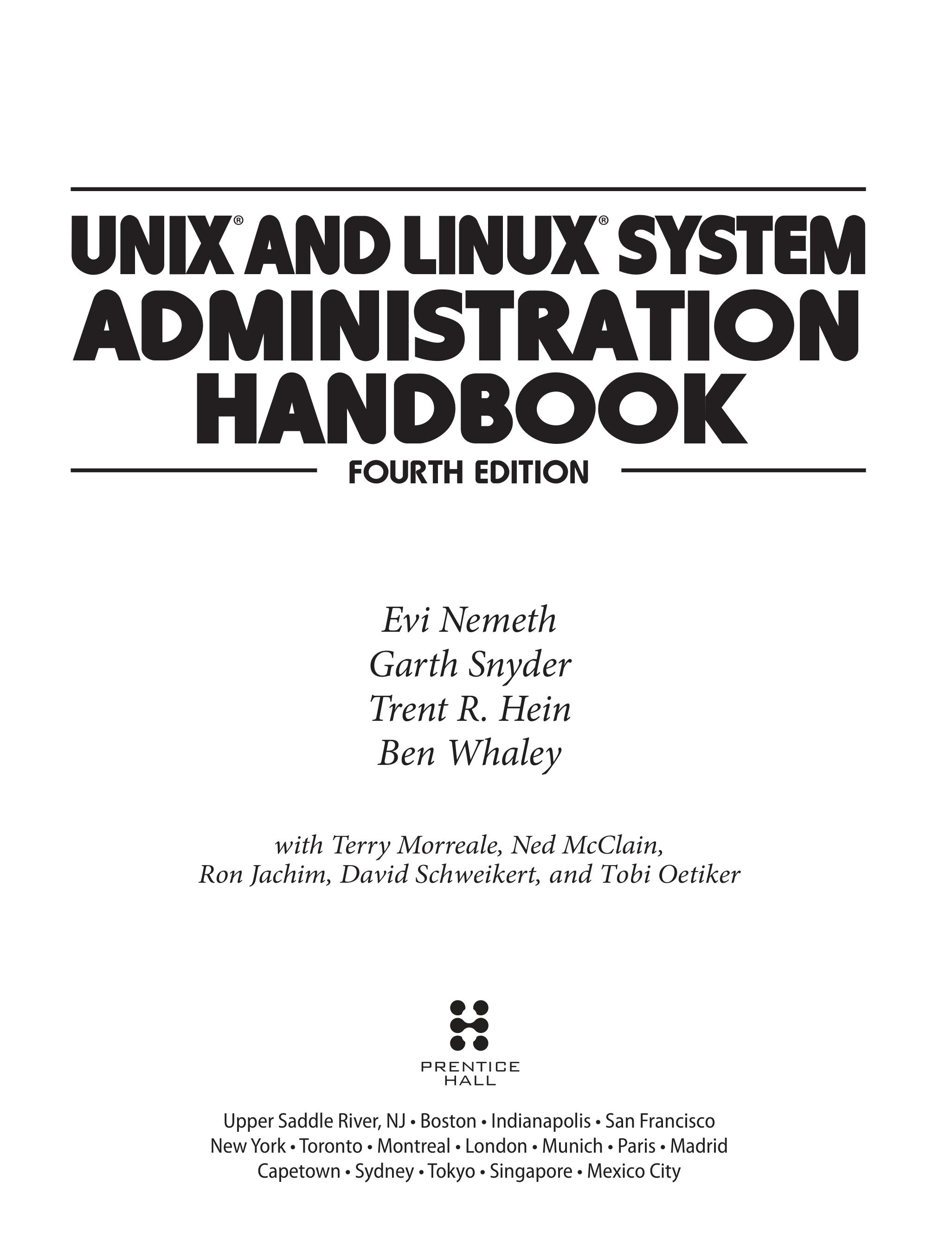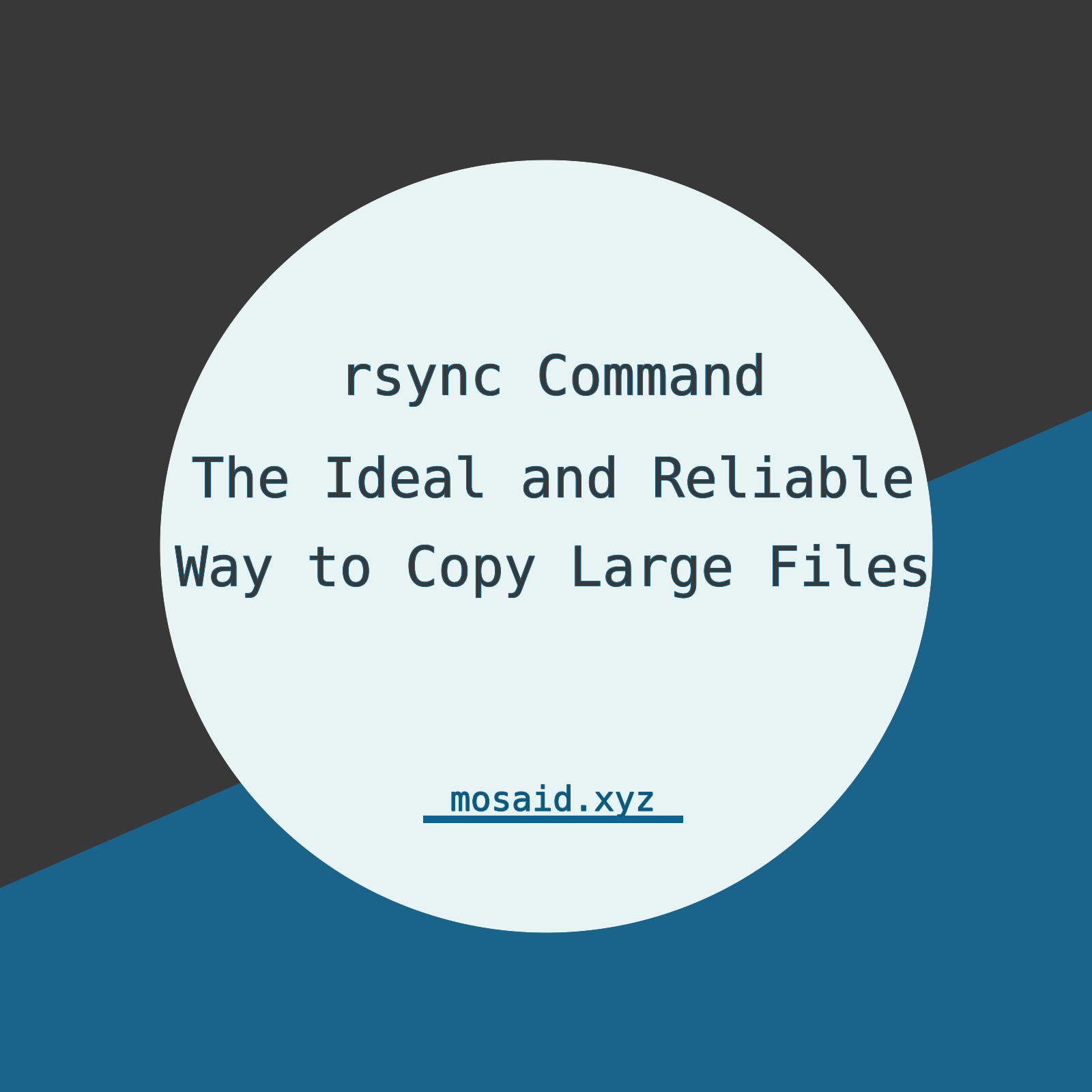
UNIX and Linux System Administration Handbook.pdf
The UNIX System Administration Handbook, written by Tim O'Reilly and others, offers a comprehensive guide to managing UNIX and Linux systems in production environments. Covering essential topics such as basic administration, networking, and supplementary information, this book provides hands-on advice, pragmatic insights, and in-depth coverage of major variants. With a focus on practicality and real-world scenarios, it serves as a valuable resource for both novice and experienced system administrators, enriched by contributions from experts in the field.
pages: 1344, views: 1874
Foreword
Twenty-seven years ago, in 1983, I wrote what may have been the first system administrator’s guide for the UNIX operating system. I’d been hired as a contractor to write documentation at a UNIX workstation company called Massachusetts Computer Company (MASSCOMP for short). When I finished the graphics programming manuals I’d been hired to write, I was casting around for something else to do there. “When any of us have system problems, we go to Tom Teixeira,” I said. “What are our customers going to do?” The answer was quick: “Uh, oh! We really need a manual.” I was soon rehired to extract as much information as I could from Tom Teixeira’s head and put it onto paper. That book covered the basics: the root account, account addition, permission management, backup and restore, a bit about networking with UUCP, and so on. It was oriented toward System V, one of the two dominant flavors of UNIX at the time (the other being Berkeley UNIX). All things considered, I did a pretty good job of extracting information from Tom and other members of the then rare caste of elite system administrators. But there was no question in my mind that when the UNIX System Administration Handbook (USAH) came out in 1989, the bible of the field had arrived—captured not by an amanuensis, but direct from the keyboards of the masters. By then, O’Reilly had become a publisher. Recognizing that many of my technical writing customers were adopting UNIX, I had begun retaining the rights to the manuals I wrote so that I could resell them to other companies. In late 1985, we introduced our first books that were sold to the public rather than licensed to companies. We focused first on small books about individual topics such as vi, xlii sed and awk, termcap and terminfo, and the UUCP networking system. We called them “Nutshell Handbooks” because we wanted to capture everything “in a nutshell.” We didn’t really know anything about publishing. Our books had no spines (they were stapled), indexes, or ISBNs. We sold them by mail order, not through bookstores. But bit by bit, we learned. And eventually, we came into competition with the existing world of computer book publishers. General UNIX administration was an obvious subject for us, but we didn’t tackle it till years later. Why not? I am a big believer in filling unmet needs, not competing for the sake of it. And it was so clear that there was already a book on the topic that was not just good but GREAT! I could imagine neither the need to compete with such a comprehensive book nor the possibility of success in doing so. Eventually, as our business matured and we entered the retail computer book market, we realized that competition can actually help grow the market. People see one book, and it’s an outlier. They see more than one, and, to quote Arlo Guthrie, “they may think it’s a movement.” Besides, in that first edition of USAH, the authors had a clear bias toward BSD-based systems, and we thought there was room for a book with more of a System V bias. In 1991, we published our own comprehensive book on UNIX system administration, Æleen Frisch’s Essential System Administration. As an author, editor, and publisher, I never paid much attention to the competition—except in a few cases. This is one of those cases. The UNIX System Administration Handbook is one of the few books we ever measured ourselves against. Could we be as good? Could we be better? Like the NBA duels of Magic Johnson and Larry Bird, the competition brought out the best in us. Uh, oh again! Fourth edition? Æleen had better get back to work! :-)
Tim O’Reilly June 2010
Preface
When we were writing the first edition of this book in the mid-1980s, we were eager to compare our manuscript with other books about system administration. To our delight, we could find only three. These days, you have your choice of hundreds. Here are the features that distinguish our book:
• We take a hands-on approach. You already have plenty of manuals; our purpose is to summarize our collective perspective on system administration and to recommend approaches that stand the test of time. This book contains numerous war stories and a wealth of pragmatic advice.
• This is not a book about how to run UNIX or Linux at home, in your garage, or on your PDA. We describe the management of production environments such as businesses, government offices, and universities.
• We cover networking in detail. It is the most difficult aspect of system administration and the area in which we think we can be of most help.
• We cover the major variants of UNIX and Linux.
THE ORGANIZATION OF THIS BOOK This book is divided into three large chunks: Basic Administration, Networking, and Bunch o’ Stuff. Basic Administration presents a broad overview of UNIX and Linux from a system administrator’s perspective. The chapters in this section cover most of the facts and techniques needed to run a stand-alone system. The Networking section describes the protocols used on UNIX systems and the techniques used to set up, extend, and maintain networks and Internet-facing servers. High-level network software is also covered here. Among the featured topics are the Domain Name System, the Network File System, electronic mail, and network management. Bunch o’ Stuff includes a variety of supplemental information. Some chapters discuss optional features such as those that support server virtualization. Others give advice on topics ranging from eco-friendly computing to the politics of running a system administration group. Each chapter is followed by a set of practice exercises. Items are marked with our estimate of the effort required to complete them, where “effort” is an indicator of both the difficulty of the task and the time required. There are four levels: no stars Easy, should be straightforward Harder or longer, may require lab work Hardest or longest, requires lab work and digging Semester-long projects (only in a few chapters) Some of the exercises require root or sudo access to the system; others require the permission of the local sysadmin group. Both requirements are mentioned in the text of the exercise.
OUR CONTRIBUTORS We’re delighted that Ned McClain, David Schweikert, and Tobi Oetiker were able to join us once again as contributing authors. With this edition, we also welcome Terry Morreale and Ron Jachim as new contributors. These contributors’ deep knowledge of a variety of areas has greatly enriched the content of this book.
CONTACT INFORMATION Please send suggestions, comments, and bug reports to ulsah@book.admin.com. We do answer mail, but please be patient; it is sometimes a few days before one of us is able to respond. Because of the volume of email that this alias receives, we regret that we are unable to answer technical questions. To view a copy of our current bug list and other late-breaking information, visit our web site, admin.com. We hope you enjoy this book, and we wish you the best of luck with your adventures in system administration!
Evi Nemeth Garth Snyder Trent R. Hein Ben Whaley June 2010












